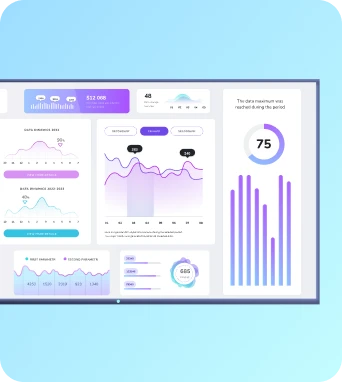Automated brightness dimming
Automated brightness dimming is a display management capability that dynamically adjusts screen luminance using ambient light sensors, scheduled profiles, or centralised policies. In digital signage and TV dashboards it maintains legibility and colour fidelity, reduces power consumption and eye strain, and helps extend hardware lifetime across workplace and public displays.
Automated brightness dimming
How it works
Automated brightness dimming relies on three technical elements: sensing, decision logic and control. Sensing can come from a device’s built‑in ambient light sensor, an external sensor connected to the player, or a networked environmental sensor in the same space. The sensor reports illuminance in lux or a relative light value; the dimming system maps that input to a target luminance percentage or a device backlight setting. Decision logic may be simple thresholding, where predefined lux bands set brightness steps, or more advanced algorithms that apply smoothing, time‑weighted averages and hysteresis to prevent jitter and frequent level changes as lighting fluctuates. Some implementations include machine learning to adapt thresholds based on historical performance and viewing patterns, but most commercial signage systems use deterministic rules for predictability. Control is the mechanism that applies the computed target value to a display. This can be achieved through HDMI‑CEC commands, networked device management APIs, vendor SDKs, or direct control of the player’s video output parameters. On hardware that supports pulse‑width modulation (PWM) for backlight control, software changes the duty cycle to alter perceived brightness; on others, gamma correction or contrast scaling is used. In centrally managed networks like those running Fugo, dimming policies are distributed as device profiles, allowing grouped behaviour and remote overrides. For reliability, good implementations include fallback defaults when sensors fail, and a reporting channel so operators can see sensor values, applied brightness levels and energy savings in the management console.
Deployment and best practices
Effective deployment of automated brightness dimming begins with a site survey and calibration. Choose sensor positions that capture representative light levels for the display’s viewing zone rather than placing sensors where incidental glare or reflections might skew readings. If the player includes an internal sensor, test readings at typical viewing distances and angles; where internal sensors prove unreliable, install a dedicated external sensor wired or paired to the player. Define lux thresholds and smoothing windows with attention to human perception: abrupt jumps are distracting, so aim for gradual transitions and implement hysteresis so the system resists minor oscillations. Consider separate day and night profiles, with a maximum brightness limit for daytime public spaces and a reduced maximum for out‑of‑hours contexts. Operationally, document exceptions and provide remote override options. Events, emergency messages or promotional campaigns may require temporary brightness increases; ensure the management platform supports scheduled or ad‑hoc overrides and that these changes can be audited. Monitor sensor health and brightness logs through your signage software to detect drift or failures early. Balance energy savings against read‑ability: in areas where safety signage or critical information is displayed, prioritise legibility. For Fugo customers, group devices with similar ambient conditions into device stacks and apply profile presets to simplify rollouts. Finally, test across seasons and weather conditions, and include stakeholders such as facilities and health and safety teams in the configuration process to align brightness behaviour with wider workplace policies.



